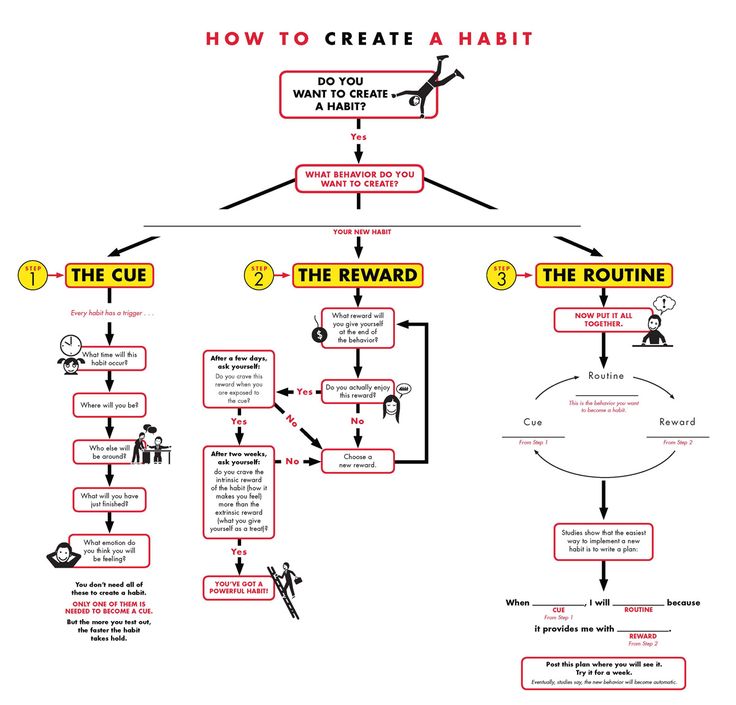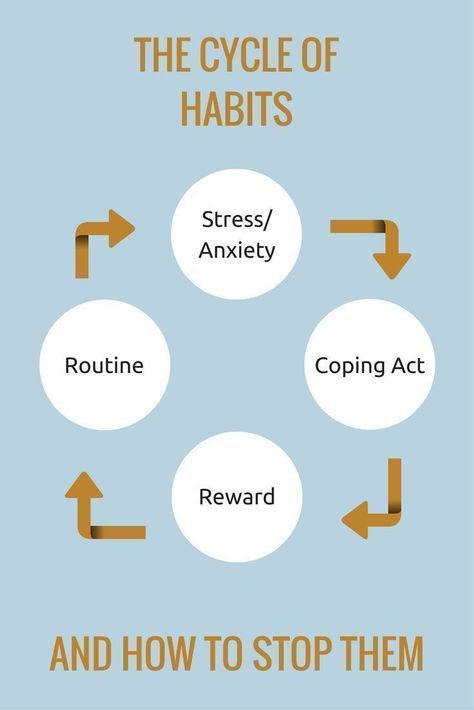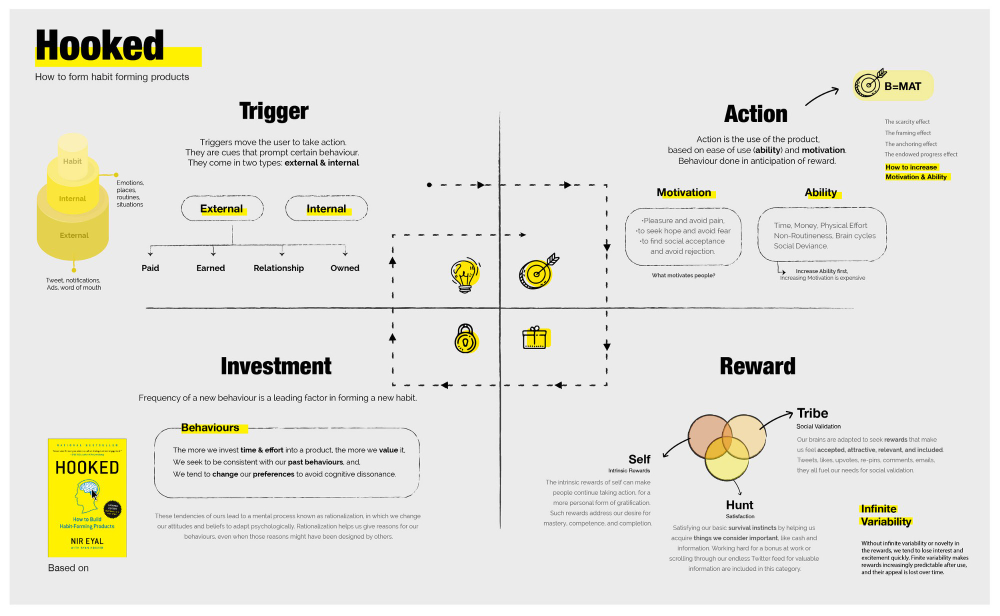How to deal with a habitual liar
How to Cope with Someone’s Compulsive Lies
Pathological lying
Pathological lying, also known as mythomania and pseudologia fantastica, is the chronic behavior of compulsive or habitual lying.
Unlike telling the occasional white lie to avoid hurting someone’s feelings or getting in trouble, a pathological liar seems to lie for no apparent reason. This can make it frustrating or hard to know what to do if you believe you’ve met one.
Though pathological lying has been recognized for more than a century, there’s not yet a clear universal definition of the condition.
Some pathological lying may result from a mental condition, such as antisocial personality disorder (sometimes called sociopathy), while others appear to have no medical reason for the behavior.
A pathological liar is someone who lies compulsively. While there appears to be many possible causes for pathological lying, it’s not yet entirely understood why someone would lie this way.
Some lies seem to be told in order to make the pathological liar appear the hero, or to gain acceptance or sympathy, while there’s seemingly nothing to be gained from other lies.
Some evidence from 2007 suggests that issues affecting the central nervous system may predispose someone to pathological lying.
Compulsive lying is also a known trait of some personality disorders, such as antisocial personality disorder. Trauma or head injuries may also play a role in pathological lying, along with an abnormality in hormone-cortisol ratio.
A 2016 study of what happens in the brain when you lie found that the more untruths a person tells, the easier and more frequent lying becomes. The results also indicated that self-interest seems to fuel dishonesty.
Though the study didn’t specifically look at pathological lying, it may give some insight into why pathological liars lie as much and as easily as they do.
The following are some of the scientifically recognized traits and characteristics of pathological liars.
Their lies seem to have no clear benefit
While a person might lie to avoid an uncomfortable situation, such as embarrassment or getting in trouble, a pathological liar tells lies or stories that don’t have an objective benefit.
Friends and family can find this especially frustrating because the person lying doesn’t stand to gain anything from their lies.
The stories they tell are usually dramatic, complicated, and detailed
Pathological liars are great storytellers. Their lies tend to be very detailed and colorful.
Even though obviously over-the-top, the pathological liar may be very convincing.
They usually portray themselves as the hero or victim
Along with being made the hero or victim in their stories, pathological liars tend to tell lies that seem to be geared at gaining admiration, sympathy, or acceptance by others.
They sometimes seem to believe the lies they tell
A pathological liar tells lies and stories that fall somewhere between conscious lying and delusion. They sometimes believe their own lies.
It’s difficult to know how to deal with a pathological liar who may not always be conscious of their lying. Some do it so often that experts believe they may not know the difference between fact and fiction after some time.
Pathological liars also tend to be natural performers. They’re eloquent and know how to engage with others when speaking. They’re creative and original, and quick thinkers who don’t usually show common signs of lying, such as long pauses or avoidance of eye contact.
When asked questions, they may speak a lot without ever being specific or answering the question.
Most people lie at one time or another. Previous research has suggested that we tell an average of 1.65 lies every day. Most of these lies are what are considered “white lies.”
Pathological lies, on the other hand, are told consistently and habitually. They tend to appear pointless and often continuous.
White lies
White lies are occasional and considered:
- small fibs
- harmless
- without malicious intent
- told to spare another’s feelings or avoid getting in trouble
Some examples of white lies include:
- saying you have a headache to get out of attending a meeting
- saying you’ve paid the phone bill when you forgot to pay it
- lying about why you were late for work
Pathological lies
Pathological lies are:
- told frequently and compulsively
- told for no apparent reason or gain
- continuous
- told to make the teller appear heroic or the victim
- not deterred by guilt or risk of getting found out
Examples of pathological lying:
- creating a false history, such as saying they’ve achieved or experienced something they haven’t
- claiming to have a life-threatening illness that they don’t have
- telling lies to impress others, such as saying they’re related to a famous person
Identifying a pathological liar isn’t always easy. While it may be human nature to be suspicious of anything that appears “too good to be true,” not all lies told by pathological liars are over-the-top.
While it may be human nature to be suspicious of anything that appears “too good to be true,” not all lies told by pathological liars are over-the-top.
They also tell “regular” lies that someone without a compulsion to lie might tell.
The following are some signs that may help you identify a pathological liar:
- they often talk about experiences and accomplishments in which they appear heroic
- they’re also the victim in many of their stories, often looking for sympathy
- their stories tend to be elaborate and very detailed
- they respond elaborately and quickly to questions, but the responses are usually vague and don’t provide an answer to the question
- they may have different versions of the same story, which stems from forgetting previous details
Knowing a pathological liar can be deeply frustrating because the lying appears to be pointless.
It can test the trust in any relationship and make it hard to even have a simple conversation with the person.
Here are a few pointers to help you handle a conversation with a pathological liar:
Don’t lose your temper
As frustrating as it may be, it’s important not to let your anger get the better of you when confronting a pathological liar. Be supportive and kind, but firm.
Expect denial
Someone who pathologically lies may have the tendency to first respond with a lie. If you confront them about their lying, chances are that they’ll deny it.
They may become enraged and express shock at the accusation.
Remember that it’s not about you
It’s hard not to take being lied to personally, but pathological lying isn’t about you. The person may be driven by an underlying personality disorder, anxiety, or low self-esteem.
Be supportive
When talking to the person about their lies, remind them that they don’t need to try to impress you. Let them know that you value them for who they really are.
Don’t engage them
When you notice the person lying, don’t engage them. You can question what they’re saying, which may encourage them to stop the lie at that point.
You can also let them know that you don’t want to continue the conversation when they’re being dishonest.
Suggest medical help
Without judgment or shaming, suggest that they consider professional help and let them know your suggestion comes from genuine concern for their well-being.
Be prepared with information about pathological lying, such as a printout of an article or a pamphlet that they can read when they’re ready. Expressing that you’re concerned that their behavior may result from an underlying medical condition may also help.
A pathological liar is an excellent storyteller and performer. They know how to captivate their audience by telling elaborate and fantastic stories while being very animated.
Along with knowing how to weave and express a detailed story, people are also fascinated by what drives a person to lie.
It’s natural to want to know why they’re lying, especially when there doesn’t seem to be an apparent reason for their lies.
Diagnosing a pathological liar can be difficult because of the many possible causes of the behavior. Speaking with the person and conducting a medical history and interview isn’t usually enough to make a diagnosis because of the person’s tendency to lie.
An important part of diagnosing a pathological liar is determining if they recognize that they’re lying or believe the lies they tell.
Some professionals use a polygraph, also known as a lie detector test. The test isn’t to catch them in a lie, but to see how well or often they “beat” the polygraph as this suggests that they believe their lies or have become good at using other measures to convince others of their lies.
Some professionals also interview family members and friends when diagnosing a pathological liar.
Treatment will depend on whether or not the pathological lying is a symptom of an underlying psychiatric condition.
Treatment would include psychotherapy and may also include medication for other issues that might be fueling the behavior, such as drugs used to treat anxiety or depression.
How to empathize and cope with a pathological liar comes down to an understanding of what may be causing this person to lie while being supportive.
It’s likely that the lying is a symptom of another issue that can be treated. Encourage them to get the help they need.
Surviving The Chronic Liar: 5 Things To Do
By Tamara Hill, MS, NCC, CCTP, LPC on July 3, 2019
Do you know someone who lies frequently about any and everything?
Have you caught someone in a few lies and wonder why they continue to engage in the behavior?
If so, you are obviously dealing with a pathological liar.
What most people fail to recognize about pathological liars is that they often lack the ability to empathize with others (walk in your shoes), feel guilty about their behavior, and have trouble controlling their innate impulse to lie. For most of us, it is very difficult to lie with a straight face and quite easy to feel guilty about the lie. But for someone with pathological behaviors, it is rathereasy for them to lie while exhibiting behaviors and emotions that make the lie believable.
For most of us, it is very difficult to lie with a straight face and quite easy to feel guilty about the lie. But for someone with pathological behaviors, it is rathereasy for them to lie while exhibiting behaviors and emotions that make the lie believable.
What is most interesting about pathological liars is that many of them know how to control their emotions in such a way that lying can look like the truth to us.
This article will explore ways to protect yourself from pathological liars and identify their modus operandi.
Pathological lying is very different from telling a “fib” or “white lie.” The lying isinsidious, evil, and sometimes vindictive. Some individuals have developed skill in lying to others and have no fear or regret. Some may even lie to a Judge, police officer, therapist, psychiatrist, family member, spouse, supervisor, etc. with no remorse. They can also present as very calm or charming, provide appropriateeye contact, maintain normal breathing rhythms, bepersonable or friendly, and have calm body language. These individuals certainlyfit the description of a sociopath and can be very dangerous.
These individuals certainlyfit the description of a sociopath and can be very dangerous.
The tragic reality for those who work with, live with, or know a pathological liar is that they are almost always victims. Sometimes you are a part of a lie and may not even know it. Other times, you may know the person is lying, but due to the person being personable and friendly, you may struggle to even consider the fact that maybe you are being lied to.
In other cases, you might also struggle to convince others that a respected or likedperson is in fact lying. As a result of some pathological liars displaying charming, intelligent, and sociable behaviors, most of society is blinded to their obvious social, emotional, and cognitivedeficits.
There are certainly ways to protect yourself from a destructive person who sendswhirlpools of confusion into your life. You should take every lie seriously and strive to remember:
- Avoid engaging the pathological liar: If you sense that you are being lied to, perhaps you are.
 We all have an “internal compass” that signals trouble or peace, truth or fiction. Trust that. There are situations in which you might feel someone is being untrue but later find out they were telling the truth. But in many cases, we, as humans, are good barometers. If you sense that someone is lying to you, don’t make the person feel comfortable by agreeing, nodding, or laughing about it. A blank stare might do the trick in shutting down the lie.
We all have an “internal compass” that signals trouble or peace, truth or fiction. Trust that. There are situations in which you might feel someone is being untrue but later find out they were telling the truth. But in many cases, we, as humans, are good barometers. If you sense that someone is lying to you, don’t make the person feel comfortable by agreeing, nodding, or laughing about it. A blank stare might do the trick in shutting down the lie. - Call them out: Sometimes it’s perfectly fine to point out that something isn’t adding up. You could most certainly put it on yourself by saying “for some reason, I am confused. Can you explain that to me again?”In counseling sessions, the use of confrontationcan be powerful if used appropriately and with tact. Confrontation does not mean creating an argument but creating an acknowledgment that information isn’t adding up. For example, a confrontation might include you stating “…that’s not what I see happening because I spoke with the Principal and he showed me documentation that you skipped school at 2:00pm on Monday.
 ” Confrontation is using facts to undercut the lie.
” Confrontation is using facts to undercut the lie. - Play “stupid”: I use this technique quite a bit in sessions with adolescents and young children. If I want a youth to open up or I’m looking to build rapport I make statements such as “…that’s not what I was told, can you help me understand because I’m a bit confused?” Individuals who tend to lie are usuallyseeking some sort of power over others. If you are able to take a step back and appear unassuming, you can actually become the person “on top” and coax the individual into explaining things so you can evaluate it. You’re not trying to catch the person in a lie per se but to clarify information in a nonconfrontational manner.
- Don’t believe anything until you confirm it:Someone with a track record of lying behaviors should never be believed at face value. The moment you begin to appear as if youbelieve what the pathological liar is saying, they will run with it. Any kind of approval or trust the pathological liar can sense makes them feel powerful and energized to continue the behavior.
 It’s always good, when speaking to someone who frequently lies, to remain neutral, detached, and focused. You should weigh everything you are being told against the facts.
It’s always good, when speaking to someone who frequently lies, to remain neutral, detached, and focused. You should weigh everything you are being told against the facts. - Don’t argue or fight with the pathological liar: It’s not worth your energy to argue with someone who lives in a fantasy or psychologically unstableworld. Most liars lack an identity and struggle with feelings of insecurity and abandonment. Other pathological liars are simply sociopathic and overly confident. Either way, don’t argue or get into a confrontation with the liar because they will use circular arguing, demean you, and possibly create more lies to use in the future (possibly against you). You will never get to the truth, even with the use of intimidation. In some cases, you might get only half of the truth. It’s best to step back, work around the pathological liar, and keeping a safe distance.
Pathological liars are difficult to live with or work with because you can’t determine what is true and what is false. You also cannot determine when the next lie will come. That’s why it’s important to understand their MO. I talk more about that in the video below:
Be mindful ofyour emotions and learn to question how you feel about what you are being told. Questions to ask yourself may include: “Do Ifeel comfortable with what is being said to me?” “Do Ifeel foolish or silly while listening to this story?” “Why amIquestioning the legitimacy of what is being said to me right now?”
The most important goal for anyone who is dealing with a pathological liar is to always remember your dignity and self-respect. A pathological liar typically has little to no empathy and will take you as far as you let them.
To see my series of videos on this topic, visit my youtube page in the description below.
As always, I wish you well
References
Dike, C.
 (2008). Pathological lying: Symptom or disease? The Psychiatric Times. Retrieved June 15, 2014 from,http://www.psychiatrictimes.com/articles/pathological-lying-symptom-or-disease.
(2008). Pathological lying: Symptom or disease? The Psychiatric Times. Retrieved June 15, 2014 from,http://www.psychiatrictimes.com/articles/pathological-lying-symptom-or-disease. Winton, R. (2001). Panel ousts Judge for lying.
Los Angeles Times. Retrieved June 15, 2014 from,http://articles.latimes.com/2001/aug/16/local/me-34920.90,000 Hardened liars. Psychology of deception [How, why and why even honest people lie]This article was originally published on 7/18/19, but has been updated to include a video and comprehensive information.
Hardened liars
Most people who are prone to pathological lying do so less explicitly than Judge Montgomery and Jacqueline. Still, they bring a lot of grief to their loved ones and colleagues and greatly complicate their own lives by trying to protect themselves.
Former prisoner
Freddie, age 24, was brought to the psychiatric office by his wife, Jackie. She practically led him by the ear through the doorway. "I want you to cure him," she announced immediately. The couple were not married for half a year, and, according to Jackie, who was 4 years older than her husband, she fell victim to one lie after another. Immediately after the wedding, she learned that their honeymoon was paid for with money that Freddie had borrowed from his employer. And he assured her that he saved them thanks to overtime. One day, parking tickets came in the mail for a total of $680. Freddie claimed to have paid for them. Jackie went on to list her husband's deceptions related to going to work (he did not admit to her about his dismissal), with bills (which he said he paid, but in fact he did not). In the final, she said: "The only time I know for sure that he is not lying is when he says that he loves me."
She practically led him by the ear through the doorway. "I want you to cure him," she announced immediately. The couple were not married for half a year, and, according to Jackie, who was 4 years older than her husband, she fell victim to one lie after another. Immediately after the wedding, she learned that their honeymoon was paid for with money that Freddie had borrowed from his employer. And he assured her that he saved them thanks to overtime. One day, parking tickets came in the mail for a total of $680. Freddie claimed to have paid for them. Jackie went on to list her husband's deceptions related to going to work (he did not admit to her about his dismissal), with bills (which he said he paid, but in fact he did not). In the final, she said: "The only time I know for sure that he is not lying is when he says that he loves me."
Freddie worked as a carpenter and was a master of his craft. He had just finished his 2.5 year probation for burglary when he met Jackie, an installer at the local telephone company. She was not a beauty, and she had an explosive temper. This repulsed the fans. But Freddie was interested in her. He himself responded to her requests and promised to improve with her help. He evoked sympathy from Jackie because of an unhappy marriage: the first wife was a leader in their relationship, often humiliated him in front of strangers and repeatedly left him for another man.
She was not a beauty, and she had an explosive temper. This repulsed the fans. But Freddie was interested in her. He himself responded to her requests and promised to improve with her help. He evoked sympathy from Jackie because of an unhappy marriage: the first wife was a leader in their relationship, often humiliated him in front of strangers and repeatedly left him for another man.
Freddie's childhood was relatively quiet. He was a sweet, quiet, slightly shy child and a mediocre student. At school, he had no problems with discipline and with the law until he confessed to the theft and was convicted. His impeccable reputation was the reason why he received such a lenient punishment. Freddie admitted to himself that his impeccable reputation was in many ways a happy misunderstanding. It just hasn't been caught before. He lied to his parents, hiding from them that he was using marijuana and cocaine. He lied to his first wife and bailiff (after receiving probation) about how often he actually attends a Narcotics Anonymous meeting. He lied to his therapist about why he didn't show up at the appointed time. He assured that he was eager to improve, but succumbs to impulses, and then goes to deceit to hide his actions.
He lied to his therapist about why he didn't show up at the appointed time. He assured that he was eager to improve, but succumbs to impulses, and then goes to deceit to hide his actions.
Freddie's first reaction to psychiatric treatment was enthusiasm. He took medication (Prozac, prescribed to reduce his impulsiveness) and agreed to psychotherapy in order to be able to fend for himself in his marriage, and not be hypocritical, dodging conflicts. It is curious that Jackie began to complain to the psychiatrist that her husband had ceased to be kind as before and provoked quarrels more often. Answering the doctor's questions, she admitted that he began to work more and lie less. When she called a second time, she was more determined and demanded that Freddie stop taking his medication and that, as a result of therapy, he would dutifully fulfill her desires. She wanted him to be "cured", as if his illness were being cured by surgery. Shortly thereafter, Freddie stopped the treatment.
Hardened liars usually lie for a number of reasons. Lies may not be harmless, they may be caused by aggressive motives, an attempt to trick an opponent, or dishonestly use other people or circumstances for personal gain. In children, lies can serve as a daring attack on parents, a mockery of the parent's value system and their aspirations. Lying can be a way to avoid punishment or conflict, or cover up shameful ignorance, or it can simply be a way for the liar to entertain himself and others. Everyday lies sometimes save us from the painful realization that the goals set have not been achieved.
A characteristic feature of compulsive liars, recorded by many researchers, is low self-esteem. Lying can be an attempt to create a comfortable psychological atmosphere for yourself, but only for a short time. Alcohol and some drugs have a similar effect. Repeated lies can maintain self-respect by shifting the blame for failures to others or creating a myth of success.
Selling (1942) named excessive parental care, rivalry between children, upbringing in a dysfunctional family, and retarded development among the roots of pathological lying. The circumstances described above and given in the next chapter include the typical psychological aspects of deep lying. Selling's views are as relevant today as they were 50 years ago. For pathological liars, lying is a tool of psychological self-defense to help maintain self-esteem or compensate for the absence of more difficult ways to cope with everyday problems. This developmental deficiency is triggered by one or more of the following factors:
The circumstances described above and given in the next chapter include the typical psychological aspects of deep lying. Selling's views are as relevant today as they were 50 years ago. For pathological liars, lying is a tool of psychological self-defense to help maintain self-esteem or compensate for the absence of more difficult ways to cope with everyday problems. This developmental deficiency is triggered by one or more of the following factors:
? dysfunctional family;
? physical or sexual abuse in childhood;
? neuropsychological abnormalities such as learning disabilities and borderline delayed development;
? suggestible or opportunistic personal qualities;
? personality disorders, mainly of the sociopathic, borderline, histrionic, or narcissistic type;
? abuse of alcohol or drugs, either by the liar himself or by members of his family.
This text is an introductory fragment.
LIARS AND ELEPHANTS
LIARS AND ELEPHANTS Like an elephant, an experienced liar does not forget anything. He replays his lie in his head several times and usually says it with ease. Ask someone to tell you about what they did last weekend and you will hear something along the lines of, “Uhh…After
What liars are made of
What are liars made of? You and I need to be able not only to watch carefully, but also to listen carefully. Here are a few points to note. • Voice register. When we are stressed, we begin to speak faster and in a higher voice. Question asked in a more subtle voice,
Hardcore Bachelors
hardened bachelors You must always be in love. That's why you should never get married. Oscar Wilde People who do not marry and remain single for the rest of their lives can be conditionally divided into two groups: those who “want but cannot” and those who “can but do not want to.” K
That's why you should never get married. Oscar Wilde People who do not marry and remain single for the rest of their lives can be conditionally divided into two groups: those who “want but cannot” and those who “can but do not want to.” K
Hardcore Bachelors
hardened bachelors You must always be in love. That's why you should never get married. Oscar Wilde People who do not marry and remain single for the rest of their lives can be conditionally divided into two groups: those who “want but cannot” and those who “can but do not want to.” By
90,000 evaluative signs of the conceptual image “False” in English Paremias The text of the scientific article in the specialty “Linguistics and literary criticism”UDC 811.111111111111111111111.373 BBK 81.432.1
Acingious signs of the conceptual image “Lie” in the paremias of the English and Russian language
22 I A. I. Lyzlov
I. Lyzlov
Annotation. The article is devoted to the consideration of paremic units of the English and Russian languages, which include proverbs and sayings. The paper studies English connected combinations, in terms of the content of which there is a conceptual image of a liar. The studied proverbs and sayings are quite widespread in the paremic heritage of both the English and Russian languages. The described units are characterized by the presence of estimated values. The purpose of this article is to study the axiological potential of the concept "lie". To achieve this goal, the author resorts to using the counter-concept "truth", which forms a binary axiological opposition with the concept "false". The study of the intension of the concept studied in the article is carried out by highlighting the minimal, “atomic” elements of meaning that contribute to the systematization of our knowledge about concepts. To achieve this task, the article uses the working term "cognitive-evaluative feature".
361
Key words: English proverbs, Russian proverbs, assessment, image, sign, image of "liar".
AXIOLOGICAL FEATURES OF THE CONCEPTUAL IMAGE "LIE" IN ENGLISH AND RUSSIAN PROVERBIAL UNITS
I A.I. Lyzlov
Abstract. The articles elaborated on the study of English and Russian proverbial units, which include proverbs and sayings. The article studies English set expressions which contain the conceptual image of a liar. The considered proverbial units are quite widely spread in the paremic thesaurus of both the English and the Russian languages. The described units reveal evaluative meanings. The purpose of the article is to study the axiological potential of the concept "lie". To achieve it the author uses the contrary concept "truth" which makes with the concept "lie" a binary axiological opposi-
tion. The analysis of the intentional meaning of the concept is carried out by means of determining the minimal, "atomic" elements of sense contributing to the systematization of the knowledge about concepts. For that reason the term "cognitive evaluative feature" is used in the work.
For that reason the term "cognitive evaluative feature" is used in the work.
Keywords: English proverbial units, Russian proverbial units, evaluation, concept, feature, the image "liar" what he knows about the state of affairs in question, or when he knows something other than what he says. From an ethical point of view, lying is condemnable if the deception is caused by the desire to harm another person or to gain an advantage over him. No matter how it looks, a lie can only be positively evaluated out of politeness or out of pity. The philosophical definition of lying makes it possible to note two things. First, lies are inextricably linked with truth. Secondly, lies are considered as an element of communication, which requires at least two actors.
As noted by Gak [2. With. 90], vices and virtues have a certain structure. Among their components, the author singles out, firstly, the subject, which is the bearer of a quality that has an axiological potential; secondly, the object, person or persons on whom the subject's influences are directed. A person sometimes lies unintentionally, not having the necessary true information, or as a result of forgetting. This type of lie interests us to a lesser extent,
although even this type of lie receives a negative assessment. A person may lie out of fear of punishment. Thus, a strategy of behavior is chosen, aimed at avoiding unpleasant consequences that occur as a result of previously committed actions that receive a negative assessment. Describing such a strategy in terms of logic, we find that the subject exerts a verbal influence on the object in order to avoid the predicted negative response of the object. A person lies intentionally for profit, misleading others. In this case, a logical analysis of a situation of this kind leads to the fact that we see the influence of the subject, in which the object of influence serves as a source of obtaining various kinds of benefits, most often material.
It should be emphasized that the author of the article considers a liar - a person who produces a statement that is not true, and the product of his verbal activity - a lie, as phenomena that are in an inextricable dialectical connection. In logic, there is an opinion that a statement in isolation from the subject of speech activity, its object, as well as the pragmatic conditions of speech production does not make sense. Based on this, the statement in one situation will be
true, in another - false. The subject of speech activity - a specific person can be recognized as a liar (or a person who tells the truth) only on the basis of an analysis of his statements in a specific speech situation. Therefore, speaking of a liar, it is impossible not to talk about his lies, and vice versa. You cannot understand one without understanding the other.
The purpose of this work is to examine lies and the image of a liar through the prism of paremic units that fix key ideas about the phenomena of the surrounding world in the collective memory of the people. The proposed article has practical value, which lies in the fact that the materials discussed in it, as well as conclusions and generalizations, can be used in teaching both English to Russian-speaking students, and in teaching Russian as a foreign language to an English-speaking audience.
The concept of “image” in linguistics is studied by many authors, but B. Spinoza was one of the first to introduce this term into scientific use [3, p. 41]. He maintains that the more things an image or affect relates to, the more causes by which it can be excited and maintained, and which the soul, under the influence of this affect, contemplates with it. Under affects, the philosopher understands our feelings, emotions, assessments. Thus, we can say that linguistic images are characterized by the ability to express emotional and evaluative meanings. Modern researchers of the image say that images are present in the semantics of0003
combinations, which are also called idioms. Phraseological units and proverbs belong to their number. The image is a fundamental component of the semantics of a phraseological unit, since it motivates the real meaning of a phraseological unit, “excites” the evaluation and emotiveness of the meaning of a phraseological unit, and is the bearer of the cultural connotation of connected combinations [4, p. 22].
22].
The study of the logic of concepts reproduced in phraseological units, including figurative concepts, is impossible without the study of elementary entities, units of a lower order than the concept, structuring it. Anna Vezhbitskaya calls them linguistic primitives, the universal foundations of human thinking. They belong to the number of units from the general set of concepts that underlie the psychological unity of mankind [5, p. 86]. Wierzbicka's primitives have a general linguistic character. The author of this article focuses on the study of the axiological aspect of the content of paremic units of the English language, reflecting a certain concept. The paper uses the term "cognitive-evaluative feature", which refers to the elementary semantic units that allow to study the content of concepts. Cognitive-evaluative features are an element of the content plan of an evaluative statement, representing knowledge of an axiological nature.
Studying conceptual formations, E. Roche comes to the conclusion that in our minds, concepts are the receptacle of a certain set of characteristics. E. Roche [7, p. 192]
Roche comes to the conclusion that in our minds, concepts are the receptacle of a certain set of characteristics. E. Roche [7, p. 192]
363
364
considered semantic elements, which are based, first of all, on a visual, figurative, component that finds its place in the mind of a person as a result of his contacts with the world. Exploring the objects of the real world and their mental reflections, Rosch comes to the conclusion that concepts are typified representations of things. The more a particular individual object of the real world embodies typical characteristics, the closer it is to the model.
For this study, the ideas of E. Roche and A. Wiezhbitskaya are valuable in that while studying the paremic expressions of the English language as carriers of concepts, the author of this article sets the task of studying the components of phraseological concepts, cognitive-evaluative features. Developing in the cancers of linguoculture, over the centuries, concepts in phraseological units "overgrow" with a numerous set of features. So, this work is devoted to the analysis of the figurative concept "lie" as a receptacle of various kinds of evaluative features - elements of meaning, which constitute the volume of the meaning of the concept. The features under consideration are described on the basis of the study of paremic units that objectify the figurative concept under study.
So, this work is devoted to the analysis of the figurative concept "lie" as a receptacle of various kinds of evaluative features - elements of meaning, which constitute the volume of the meaning of the concept. The features under consideration are described on the basis of the study of paremic units that objectify the figurative concept under study.
Truth as counterpart of lies.
One of the earliest paremic units of the English language, recorded in the dictionary sources of the Middle English period, is the fourteenth-century saying truth will out (ODP). It says that the truth will find its way. The axiological potential of the considered unit is aimed at
censure of lies. The paremic unit children and fools tell the truth
(ODP), as follows from the analysis of sources, is a very early borrowing from French, which took place, presumably, at the beginning of the fourteenth century. She points to social groups that, based on the ideas of a naive picture of the world, do not tend to lie. Children do not lie because they are naive, because they are told that it is wrong to lie. Fools are like children. Their minds are not so sophisticated as to gain advantage through lies.
Children do not lie because they are naive, because they are told that it is wrong to lie. Fools are like children. Their minds are not so sophisticated as to gain advantage through lies.
The paremic unit truth is stranger than fiction (ODP), which some researchers attribute to Byron's pen, is, in fact, an expression created by the ancient Greek orator Democritus. In English, the proverb, which refers to the fact that truth is more amazing than fiction, is fixed in English in the seventeenth century. The truth can be much more complicated than any sophisticated inventions of a fool. The lie in the proverb a lie stands on one leg, the truth on two (WDP) is compared with the truth. The paremia under consideration reproduces an anthropomorphic image that describes a situation where a lie stands on one leg, and the truth on two. Thus, in the phrase under consideration, the priority of truth is postulated, the desire to achieve the victory of truth over lies. The well-established anthropomorphic image describing a lie, in which the concept of “leg” appears, was so successful that it was further developed. It was embodied, for example, in such a phrase as a lie has no legs (WDP), the plan of the content of which says that a lie has no
It was embodied, for example, in such a phrase as a lie has no legs (WDP), the plan of the content of which says that a lie has no
feet. So, these statements emphasize the solidity of the truth and the unreliability of lies, which are at risk of "falling."
Many people quote the English proverb truth is in wine (ODP), claiming, not without irony, that the truth is in wine. In a state of intoxication, a person hardly manages to lie. In ancient times, libations were served at celebrations in honor of the pagan gods, who, as it was then believed, were given to reveal certain truths to people. The Latin version of this statement is also known: in vino veritas, however, it is believed that this statement is of Greek origin, it is prescribed to the thinker of the sixth century BC. e. Alkey. In Europe, this phrase was popularized by Erasmus of Rotterdam.
In Russian proverbs, the opposition of the concepts of truth and lies is also used to express a negative assessment of the latter. In many Russian proverbs, a lie is described as a counteragent of the truth in a situation where somatism “leg” is involved: a lie stands on one leg, the truth - on two (STRPP). The process of movement can also be involved - running: a lie is frisky, but she cannot escape from the truth (STRPP). Lies as a negative concept can be described with the help of pejoratively perceived processes of decomposition, decay: what is false is rotten (SPPRN). As can be seen from the paroemias cited above, human ideas give preference to the ameliorative phenomenon - truth. According to the didactic ideas reflected in proverbs, lies should be put to shame.
In many Russian proverbs, a lie is described as a counteragent of the truth in a situation where somatism “leg” is involved: a lie stands on one leg, the truth - on two (STRPP). The process of movement can also be involved - running: a lie is frisky, but she cannot escape from the truth (STRPP). Lies as a negative concept can be described with the help of pejoratively perceived processes of decomposition, decay: what is false is rotten (SPPRN). As can be seen from the paroemias cited above, human ideas give preference to the ameliorative phenomenon - truth. According to the didactic ideas reflected in proverbs, lies should be put to shame.
The power of lies.
The image of a lie can be considered as an anthropomorphic or biomorphic entity. The consideration of abstract phenomena by humanizing them, giving them visual-figurative features is characteristic of representatives of naive thinking. Similar ideas about lies are reflected in the paremic units of the English language.
Considering a lie as a counteragent of the truth, proverbs note that a lie is a powerful weapon against the truth. Lies are believed faster than the truth, false rumors, misinformation spreads quickly, causing great damage. After all, only the truth requires proof.
Contrasting truth and falsehood as anthropomorphic entities is typical for a number of ancient authors. In many works, a lie appears as a certain person, ready to harm the truth, to enter into an argument with it. Dictionary sources present us with the phrase: a lie is halfway around the world before „„|-the truth has got its boots (ODP). 365 Let us turn to the content plan of the considered paremic unit. It says that false news can spread faster than lies. This phrase is attributed to the first century BC Roman poet Virgil, who mentions it in his Aeneid. The era of renaissance can be described as a period of human development, when there is an interest in the achievements of antiquity, including the works of ancient poets. Shakespeare, the great poet of English culture, refers to the works of the great Latin poets. He also popularized
Shakespeare, the great poet of English culture, refers to the works of the great Latin poets. He also popularized
366
was the paremic unit in question. So, in their historical tragedies one can find many references to ancient authors.
One of the latest paremic units on the subject under study is a statement that appeared after the First World War: truth is the first casualty of war (ODP). It appeared as a reaction to the First World War and its later interpretations by politicians and the military to its ambiguous causes and results. It says that truth is the first casualty of war. This unit reflects an important cognitive-evaluative feature: the truth suffers from evil - war. Modernity is faced with the concept of "information wars". Lies are already seen as a powerful weapon for disinformation and suppression of the will of the enemy.
The idea that lies spread rapidly is expressed in several paremic units. The paremic unit of the English language lies have short wings (WDP) tells that a lie has short wings. In it, the spread of lies is compared with a swift-winged bird. This unit is characterized by the presence of a synonym, which also contains a biomorphic element: lies have short legs (WDP). In this unit, we are talking about the fact that lies have short legs. The anthropomorphic character of lies is also clearly seen in the English paremic statement a lie begets lie (WDP), which states that a lie begets a lie.
In it, the spread of lies is compared with a swift-winged bird. This unit is characterized by the presence of a synonym, which also contains a biomorphic element: lies have short legs (WDP). In this unit, we are talking about the fact that lies have short legs. The anthropomorphic character of lies is also clearly seen in the English paremic statement a lie begets lie (WDP), which states that a lie begets a lie.
An evasive answer, a half-truth is no different about a lie. This is what
says the English paremic unit: half the truth is often the whole lie (ODP). Here is an important sign of a lie - its fuzzy, blurry character. In order to hide the ugly truth, you need to turn to lies: the greater the truth the greater the libel (ODP). The authorship of this phrase is attributed to Robert Burns. The sentence in question uses the stylistic device of repetition to reinforce the idea being described, which is that it takes a big lie to distort the underlying truth. Sometimes it is not easy to find the truth. The figurative and everyday thinking of people of the 18th century points to this in the proverb: truth lies at the bottom of the well (ODP). Difficulties in striving to find the truth are described in this unit by means of a spatial figurative situation, in which we are talking about the fact that the truth is as difficult to find as to get to the bottom of the well. Lying is easy, finding the truth is hard.
The figurative and everyday thinking of people of the 18th century points to this in the proverb: truth lies at the bottom of the well (ODP). Difficulties in striving to find the truth are described in this unit by means of a spatial figurative situation, in which we are talking about the fact that the truth is as difficult to find as to get to the bottom of the well. Lying is easy, finding the truth is hard.
In the Russian language, there are a significant number of anthropomorphic images of lies that reveal a person's negative attitude towards this phenomenon. In Russian, as well as in English, lies are described in somatic terms. A number of paroemias associate lies with the image of the legs or their main function - walking. So, Russian people say that lies are crooked (STRPP), lies have short legs (STRPP), lies stand on feet of clay (STRPP). Sometimes in this paremic situation, a zoomorphic image with the semantics of a negative assessment is involved: a lie walks on cockroach legs (STRPP). Is-
Is-
Tina is considered in Russian units as the norm. A lie is a distortion of the truth; flawed, grotesque images with a touch of irony are used to describe it.
A lie can be regarded as a dynamic, progressive phenomenon of an axiological nature, as is the case in proverbs with the verbal semantics of movement: a small lie leads a big one (STRPP). As can be seen from the examples, in Russian, as well as in English, such a sign as the ability to reproduce oneself is recognized as a lie.
The source of lies.
In the paroemias of the English language, describing lies, the image of the devil appears, which a number of researchers attribute to precedent phenomena. The devil is the father of lies, confusing a person, leading him astray from the true path. In paremic units, the devil is an ambiguous, ambivalent image. The ambivalence of the image of the devil is a necessary consequence of ethical dualism. Raising evil to a universal principle, culture tried to combine the objectively incompatible: strength and impotence, indomitable energy and inner insignificance. This is how the devil turned out. He could not be portrayed as too powerful, for then he would become equal to a god and attract to his side those who worshiped power. But it was also impossible to exaggerate his frailty, because no one would take him seriously [6, p.114]. The paremic unit tell the truth and shame the devil (ODP) can be considered as a kind of guide to action, since only truthful
This is how the devil turned out. He could not be portrayed as too powerful, for then he would become equal to a god and attract to his side those who worshiped power. But it was also impossible to exaggerate his frailty, because no one would take him seriously [6, p.114]. The paremic unit tell the truth and shame the devil (ODP) can be considered as a kind of guide to action, since only truthful
speeches, according to the English of the Renaissance, can shame the devil. This idea was very attractive to the English throughout the New England period. For example, one of the later proverbs of the twentieth century, truth makes the devil blush (ODP), presents the devil as some kind of anthropomorphic entity. In the considered paremic unit of the English language, it is said that only the truth can make the devil blush. Truth is the only weapon against lies.
Comparative-evaluative proverb as false as Devil (WDP) also points to the devil as the source of lies. The image of the dark forces, or rather, the metaphysical dark world - hell, is used as a figurative basis for creating a paremic unit: as false as Hell (WDP). In turn, in the proverb as false as God is true (WDP), a polar metaphysical image, the image of God, is involved. These units characterize the extreme degree of manifestation of the described quality - a lie, since theological terms in the Middle Ages were considered as stylistically colored and were used to express an emotional assessment.
In turn, in the proverb as false as God is true (WDP), a polar metaphysical image, the image of God, is involved. These units characterize the extreme degree of manifestation of the described quality - a lie, since theological terms in the Middle Ages were considered as stylistically colored and were used to express an emotional assessment.
The image of a liar.
The image of a liar is formed in English proverbs. The centuries-old confrontation between the English and the Scots did not at all contribute to the emergence of positive assessments of their neighbors by the two nations. Therefore, it is not surprising that by the seventeenth century in the minds of the British there was an idea of the Scots as the embodiment of a lie, as evidenced by the comparative paremic unit: as false as Scot (WDP). The latest comparative-evaluative unit as false as fox (WDP) uses the biomorphic image of a fox for the normative-evaluative description of cunning and lies.
There are proverbs in English that describe experienced liars. Of the inveterate liar, the English say, not without irony, that he will never allow other people to lie in his presence: he will not let anybody lie by him (WDP). An experienced liar will always recognize someone else's lies. Metonymy is a very frequent technique used within paremic units. One is an example of this: a false tongue will hardly speak the truth (WDP). The image of a skillful liar is realized in some paremic units, in which zoonymic images are present. One of the earliest units devoted to this topic is a comparative evaluative proverb, which involves the image of a dog: to lie as fast as a dog (WDP). At the same time, dictionaries record the appearance of another comparative paremic unit of the English language to lie as fast as horse will trot (WDP), which says that a person lies as fast as a horse gallops. Somewhat later, a paremic text is recorded in which the image of a dog is presented: to lie as fast as a dog can lick a dish (WDP). This paremic unit of the English language has a strong emotional and evaluative charge.
Of the inveterate liar, the English say, not without irony, that he will never allow other people to lie in his presence: he will not let anybody lie by him (WDP). An experienced liar will always recognize someone else's lies. Metonymy is a very frequent technique used within paremic units. One is an example of this: a false tongue will hardly speak the truth (WDP). The image of a skillful liar is realized in some paremic units, in which zoonymic images are present. One of the earliest units devoted to this topic is a comparative evaluative proverb, which involves the image of a dog: to lie as fast as a dog (WDP). At the same time, dictionaries record the appearance of another comparative paremic unit of the English language to lie as fast as horse will trot (WDP), which says that a person lies as fast as a horse gallops. Somewhat later, a paremic text is recorded in which the image of a dog is presented: to lie as fast as a dog can lick a dish (WDP). This paremic unit of the English language has a strong emotional and evaluative charge. The internal form of the unit in question reflects the idea that a person lies as quickly as a dog licks a dish. So, cognitive-evaluative
The internal form of the unit in question reflects the idea that a person lies as quickly as a dog licks a dish. So, cognitive-evaluative
A nocturnal sign of a skillful lie is the ability of a liar to quickly compose false statements.
In the paremic units of the English language, not only skillful, but also inexperienced, inept liars are described. The saying you licked not your lips when you lied last (WDP) describes an inept liar. In this statement, the psychosomatic features of the behavior of some people who tell a lie are noted. The unit in question indicates that some people lick their lips when they lie. A clear, obvious lie is described as a "loud lie" in the paremic unit: that is a lie and a loud one (WDP). An outright lie is described with the help of an epithet, the figurative basis of which is taken from the sphere of floristic themes. It is called a "lettuce lie" in the English proverb: his lies are latticed lies, and you may see through them (WDP). The lettuce leaf is so thin that it can let in sunlight, which symbolizes truth. The emotional-evaluative component of the meaning of the paremia if a lie could have choked him, it would have done it (WDP) is obvious. It is revealed with the help of verbal metaphorization. The negative evaluation in the paremic unit under consideration is so strong that the English want the liar to choke on his lie. The subjunctive expresses here a real view, and things expressing the modality of impossibility.
The emotional-evaluative component of the meaning of the paremia if a lie could have choked him, it would have done it (WDP) is obvious. It is revealed with the help of verbal metaphorization. The negative evaluation in the paremic unit under consideration is so strong that the English want the liar to choke on his lie. The subjunctive expresses here a real view, and things expressing the modality of impossibility.
An apology for liars can be the paremic unit tell a man a lie and give him a reason
for it (WDP), which says that a person always tends to look for excuses for his actions, including very unseemly ones. Even if a person lied, he will try to make a deal with his conscience. The proverb tell a lie and find out the truth (WDP) can serve as both an excuse for liars and a program of behavior. In order to know the truth, sometimes you have to deviate from the truth. The paremic saying of the English language ask no questions and you shall hear no lies (ODP) offers a program of human behavior if there is no opportunity or desire to tell the truth. Sometimes you don't need to ask awkward questions if you don't want to hear an insincere answer.
Sometimes you don't need to ask awkward questions if you don't want to hear an insincere answer.
In Russian, one can find many examples of paremic units describing a liar. A lie in a number of units is described by pointing to the reactions of the organism characteristic of a person, in cases where a person tells a lie. So, in the combinations under consideration, bodily manifestations are used that are associated with the work of the eyes - lies and does not blink an eye (STRPP), throat - lies and does not cough (STRPP), skin - lies and does not blush (STRPP), body movement - whatever step, lie (STRPP). In these units, the image of a skillful liar is presented, which can suppress or hide the characteristic signs of a lie.
Just like in English, Russian proverbs use comparative models for pejorative evaluation of a liar. For this, images associated with
women's labor, sewing can be selected: lying like beads below (STRPP), lying like sewing with silk (STRPP). Perhaps these proverbs appeared in the women's team. Russian proverbs are characterized by a phrase associated with superstitious ideas about animals, horses: lying like a gray gelding (STRPP). A more recent comparative unit used to condemn liars is the phrase: lying like a weather forecast (STRPP). After all, weather forecasting as a ubiquitous phenomenon appears in the twentieth century.
Russian proverbs are characterized by a phrase associated with superstitious ideas about animals, horses: lying like a gray gelding (STRPP). A more recent comparative unit used to condemn liars is the phrase: lying like a weather forecast (STRPP). After all, weather forecasting as a ubiquitous phenomenon appears in the twentieth century.
Lying can be seen as a social habit: those who are accustomed to lying are hard to fall behind (STRPP). However, the victims of this vice are regarded as unworthy people, their society is shunned: whoever loves to lie cannot become a friend (STRPP). A number of proverbs describe inveterate liars. To enhance the emotional impact when using this kind of paremic statements in speech, temporal elements can be used: he tells the truth once a year according to a promise (STRPP), do not lie all at once, leave it for tomorrow (STRPP). The one for whom a lie has become a habit, if he tells the truth, then by chance, unintentionally: he will tell the truth by chance (STRPP). As Russian proverbs note, not without irony, a tendency to lie is characteristic of people of certain occupations, or rather, of persons speaking in a certain social situation. This is how Russian hunters like to lie - whatever the hunter says, he will lie (SPPRN), as well as matchmakers - no one will lie against the matchmaker (STRPP).
As Russian proverbs note, not without irony, a tendency to lie is characteristic of people of certain occupations, or rather, of persons speaking in a certain social situation. This is how Russian hunters like to lie - whatever the hunter says, he will lie (SPPRN), as well as matchmakers - no one will lie against the matchmaker (STRPP).
369
370
The Russian language deals with extreme manifestations of lies. So, notorious liars are accused of lack of conscience: they lie without a twinge of conscience (STRPP). When describing liars, the negatively perceived concept of death is used to reinforce the meaning of the units in question. These are the units: he will lie to death seven (STRPP), whoever distorts him will not live for three days (STRPP). Their semantics is also interesting in that the described phrases use numbers that were given a mythical meaning, seven, three. False behavior is prescribed in them as a kind of competition, an attempt to impose one's will. The element of competition, though without the semantics of death, is found in the phrase: he lies so that neither foot nor horse can keep up with him (SPPRN).
The element of competition, though without the semantics of death, is found in the phrase: he lies so that neither foot nor horse can keep up with him (SPPRN).
Russian proverbs present not only the image of a liar, but also the image of a person who is the object of false speeches, the victim of lies. Somatic semantics is combined in a number of proverbs with the semantics of destruction, rejection. An idea of this kind is expressed within the framework of a verb in paremic statements, where the image of ears is used as a nominal element-somatism: ears wither from lies (STRPP). The image of the soul, opposed to the bodily image, can also be used: from lying from the soul rushing (STRPP).
As a result of the study of the conceptual image "lie", we come to the conclusion that it is a multifaceted formation. It is realized in many paremic texts, and it appears throughout the history of the English
language, which proves the relevant nature of the image "lie". The conceptual image "lie" is also present in the paremiology of the Russian language.
The considered image implements various cognitive-evaluative features. A lie in a number of paremic units, both English and Russian, is considered as an axiological counteragent of truth. Recognizing the ethical priority of the truth, however, it is impossible not to take into account the power of lies. Comparative semantics of lies is also characteristic of proverbs in the Russian language. They give a normative-evaluative characteristic of lies.
For a number of proverbs, both Russian and English, it is common to describe abstract entities using images characteristic of the description of a person, in other words, a lie is considered in a number of paremic texts as an anthropomorphic phenomenon. Paremias seek to characterize a liar, they highlight a number of typical characteristics that are characteristic of people who tell a lie. So, for the Russian language, the ability to describe a lie with the help of some psycho-somatic reactions is special. A lie receives an expressive and evaluative description, when the concept of "death" is used in some proverbs. The English often use the image of the devil to describe a liar.
The English often use the image of the devil to describe a liar.
LIST OF SOURCES AND LITERATURE
1. Philosophical Encyclopedic Dictionary [Text] / Ed. E.F. Gubsky. -M.: INFRA-M, 2006. - 574 p.
2. Gak, V.G. Actant structure of sins and virtues [Text] / V.G. Gak // Logical analysis of language
: Languages of ethics. / Rev. editor: N.D. Arutyunova, T.E. Yanko, N.K. Ryabtsev. - M.: Languages of Russian culture, 2000. - 448 p.
3. Spinoza, B. Theological and political treatise: trans. from lat. and goll. [Text] / B. Spinoza / Ch. ed. IN AND. Galy. - Kharkov: Folio, 2001. - 652 p.
4. Zimin, V.I. The main roles of the image in the semantic structure of a phraseological unit [Text] / V.I. Zimin // Phraseologism and word in artistic, journalistic and colloquial discourses: Proceedings of the Intern. scientific-practical. conf. / Under scientific. ed. I.Yu. Tretyakova. - Kostroma, 2016. - 281 p.
5. Vezhbitskaya, A. Semantic universals and basic concepts [Text] / A. Vezhbitskaya. - M.: Languages of Slavic cultures, 2011. - 568 p.
Vezhbitskaya. - M.: Languages of Slavic cultures, 2011. - 568 p.
6. Skripnik, A.P. Moral evil in the history of ethics and culture [Text] / A.P. Skrip-nick. - M.: Publishing house of political literature, 19ext] / E. Rosch // Journal of Experimental Psychology. - 1975. - Vol. 104. - no. 3.-Pp. 192-233.
8. (ODP): Speakers, J. The Oxford dictionary of proverbs, 5th edition, Oxford University press, NY, 2008. - 388 p.
9. (WDP): Apperson, G.L. The Wordsworth dictionary of proverbs, Hertford-London, Wordsworth editions Ltd., 2006. - 656 p.
10. (SPPRN): Dahl, V.I. Collection of proverbs and sayings of the Russian people: In 2 vols. T. 1 [Text] / V.I. Dal. - M.: Fiction, 1989. - 350 p.
11. (STRPP): Zimin, V.I. Dictionary thesaurus of Russian proverbs, sayings and apt expressions [Text] / V.I. Zimin. - M.: AST-PRESS KNIGA, 2012. - 736 p.
REFERENCES
1. Filosofskij jenciklopedicheskij slovar, ed. E.F. Gubskogo, Moscow, INFRA-M, 2006, 574 p. (in Russian)
(in Russian)
2. Gak V.G., "Aktantnaja struktura grehov i do-brodetelej", in: Logicheskij analiz jazyka: Jazyki jetiki, ed. N.D. Arutjunova, T.E. Janko, N.K. Rjabceva, Moscow, Jazyki russ-koj culture, 2000, 448 p. (in English)
3. Rosch E., Cognitive Representations of Semantic Categories, Journal of Experimental Psychology, 1975, Vol. 104, no. 3, pp. 192233. (in Russian)
4. Skripnik A.P., Moralnoe zlo v istorii jetiki i kultury, Moscow, Izdatelstvo politicheskoj literatury, 1992, 321 p. (in Russian)
5. Spinoza B., Bogoslovsko-politicheskij traktat, trans., ed. V.I. Galij, Harkov, Folio, 2001, 652 p. (in Russian)
6. Vezhbickaja A., Semanticheskie universalii i bazisnye koncepty, Moscow, Jazyki slavjan-skih kultur, 2011, 568 p. (in English)
7. Zimin V.I., "Osnovnye roli obraza v seman-ticheskoj strukture frazeologizma", in: Frazeologizm i slovo v hudozhestvennom, publicisticheskom i narodno-razgovornom diskursah, Proceedings of the International Conference, ed.














